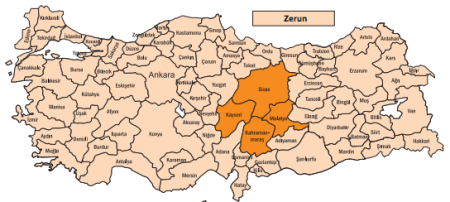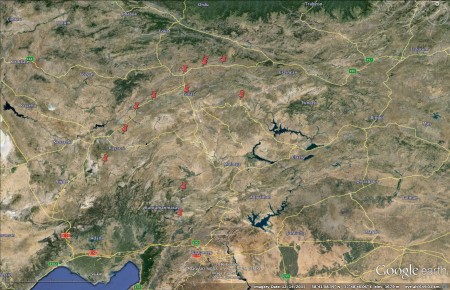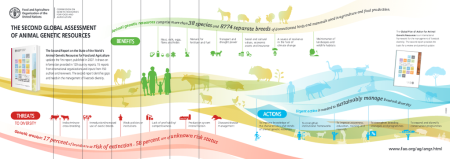Six years in the making, FAO announced today the publication of surveys of wheat landraces in farmers’ fields in Tajikistan, Turkey and Uzbekistan. The work was done in collaboration with CIMMYT, ICARDA and national researchers. Although, perhaps surprisingly, dozens of landraces were still found — 162 distinct names in Turkey — they are certainly under threat:
Local landraces today account for less than 1 percent of total wheat production. Over the past 75 years, according to field surveys, the number of wheat landraces fell from 37 to 7 in Balikesir, a western province of Turkey.
Here’s the distribution of the landrace Zerun, according to the Turkey survey.
There are 14 accessions with this name listed in Genesys, and they do indeed come from the region in question, though mainly from close to roads (click to see better):
It was not clear to me from the report of the work in Turkey whether samples were taken for ex situ conservation, or at least genotypic comparison with existing accessions. But if this one landrace is anything to go by, there might still be scope for some gap-filling collecting.


